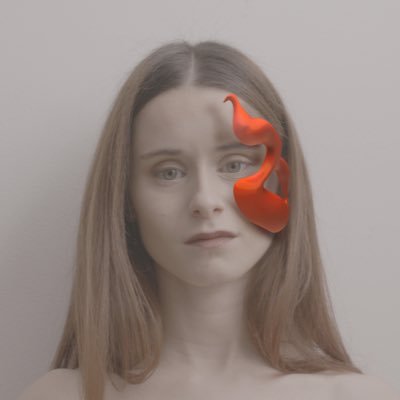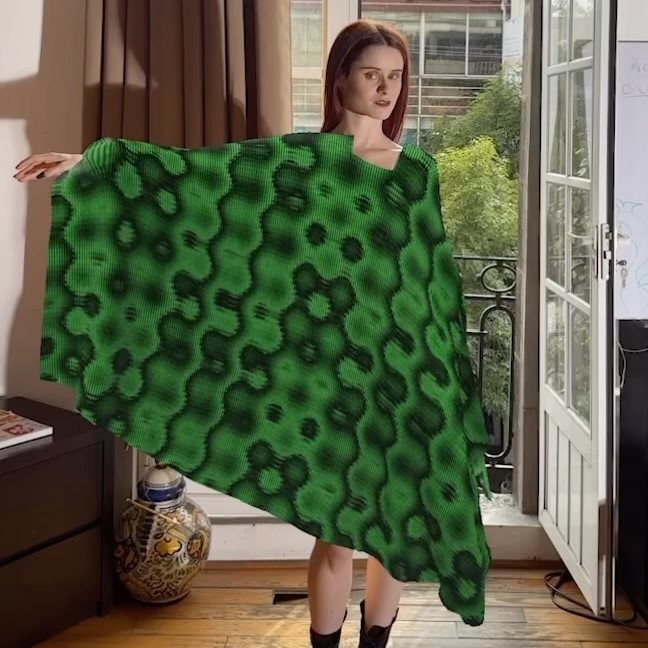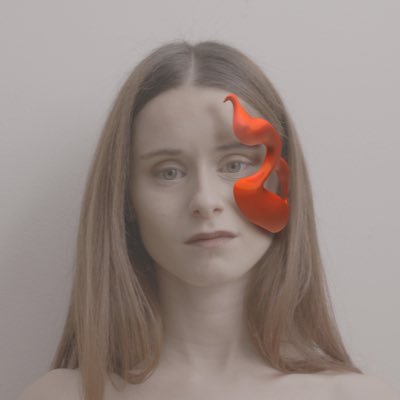Next Up: Dani Loftus on Leading a Cultural Metamorphosis Around Digital Fashion
The metaverse brings with it many promises: finding identity anew through digital means, the democratization of information, and the potential to achieve financial independence, to name a few. Yet, before these broad-scope benchmarks can be achieved, it’s surely up to the blockchain-based builders of today to iterate upon our current culture to lead us into the future.
And although a true-to-form metaverse may be a ways off, we’ve already begun to see glimmers of the fabled next iteration of the internet through advents like artificial intelligence, Soulbound Tokens, and the crossover between digital and physical. Specifically, thanks to the work of industry-leading creatives, such as Dani Loftus, our collective perspective about what the future might feel, sound, and look like continues to change.
A pioneer in the digital fashion world, Loftus exists toward the forefront of the cultural metamorphosis were currently experiencing. And because every week, nft now’s Next Up unveils a new artist from our curated list of ascendant talents who have been making significant waves throughout Web3, this week, we’re excited to highlight the ongoing digital fashion revolution through the lens of Dani Loftus.
Dani Loftus


Dani Loftus is an artist, model, and self-proclaimed imaginary influencer who has become known for pioneering digital fashion through digital outfits shared on social media. She is the founder of This Outfit Does Not Exist, a platform aimed at bringing digital fashion to life through exploration and exhibition.
In April 2023, Loftus took another stride toward the forefront of digital fashion innovation by launching Draup, a platform that aims to “bring code to couture.” Through Draup, Loftus seeks to create digital fashion collections in collaboration with pioneering artists — with the platform’s inaugural collection featuring pieces from Nicolas Sassoon, who has worked with the likes of Uniqlo and Balenciaga.
In her endeavors, Loftus draws on her past experience in blockchain-based fintech to help drive the fashion industry’s transition towards more digital-leaning models of creation and consumption. Her desire to revolutionize the accessibility and sustainability of virtual garments has led to her receiving countless accolades both within Web3 and the traditional fashion industry.
We had the opportunity to ask Dani Loftus a few questions about NFTs and her artistic process.
nft now: How did you first become interested/involved in NFTs?
Loftus: My first job out of college was in a blockchain-based fintech, so my first experience of an on-chain world was relatively early. In the years after, I worked in innovation (and would write sci-fi on the side) and became fascinated by the concept of digitally native worlds and identities. I started as a digital fashion content creator in 2020, launching This Outfit Does Not Exist in 2021.
It came as a response to my excitement around where digitally native identities were heading and because, at the time, there was absolutely nothing out there (not a single article) explaining what digital fashion was or the promise it held. With the last bull market, when digital fashion took off, I realized there was still a lack of creators really experimenting with what it meant to make digital fashion beyond using digital design software. From there, Draup was born!
nft now: How would you describe your art?
Loftus: I think ‘code as couture’ really sums it up. For centuries couture houses have brought in the best seamstresses, tailors, and creative directors to bring their visions to life. We work with digital artists to that same effect. Each collection we create leverages elements of their craft to tell a story that’s not just tech-enabled but tech-enhanced.
Similarly, all of our collections are generative. Meaning collectors get a unique piece of digital fashion tied to the wider collection with a shared algorithmic thread. Many of the traits we code in are not replicable in digital art but ‘fashion native,’ material, silhouette, and cut are all algorithmically influenced, which I hope has the effect of showing what code-based couture really represents.
nft now: What’s your process like? Where do you usually find inspiration?
Loftus: Because each collection is co-created in collaboration with a different digitally native artist, our process is extensive and collaborative. We begin with a theme for a collection or season which we think would be a compelling story to tell. We then make a shortlist of the artists we would be excited to work with, crucial here is that digital fashion is an extension of their existing practice.
They could have worked with textiles, collaborated with brands, or experimented in their spare time with fashion-related projects, but it’s essential that they don’t see this as ‘making merch’ and have the passion that we do. Once we find the artists, we decide on an element to co-create (in our first collection with Nicolas Sassoon, it was moire patterns) and a honed-in narrative. Then, while they go away and work on that, our team does all the sketches and 3D design (AKA the more fashion-native elements).
Towards the end of the process, we come back together and begin to converge their work and ours, both placing it into the cloth composition and coding elements into our generative 3D traits. I’ve always been inspired by avant-garde creators and collectors who tend to the fantastical side of fashion. Think Thierry Mugler, Isabella Blow, and Alexander McQueen. I also love great tongue-in-cheek storytellers. The past few months, that’s been MSCHF and Tommy Cash.
The post Next Up: Dani Loftus on Leading a Cultural Metamorphosis Around Digital Fashion appeared first on nft now.

